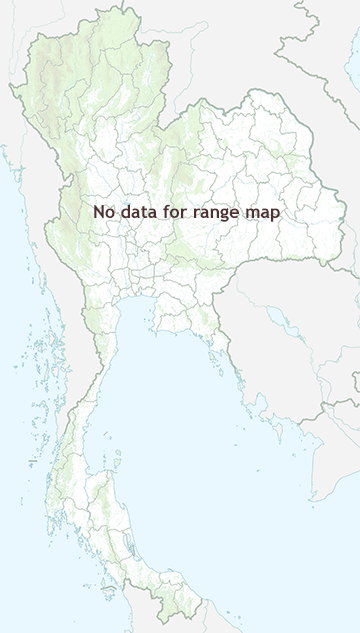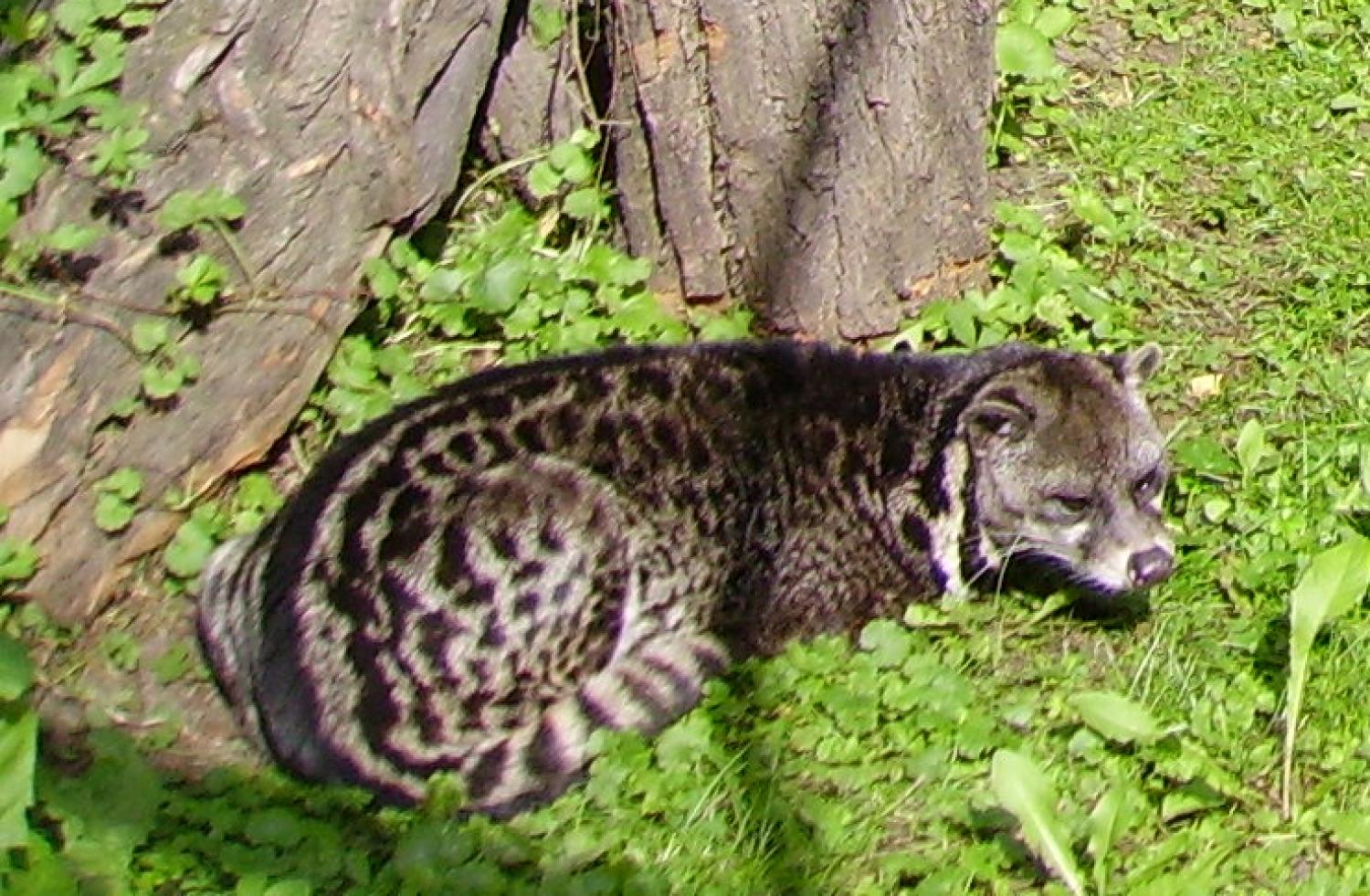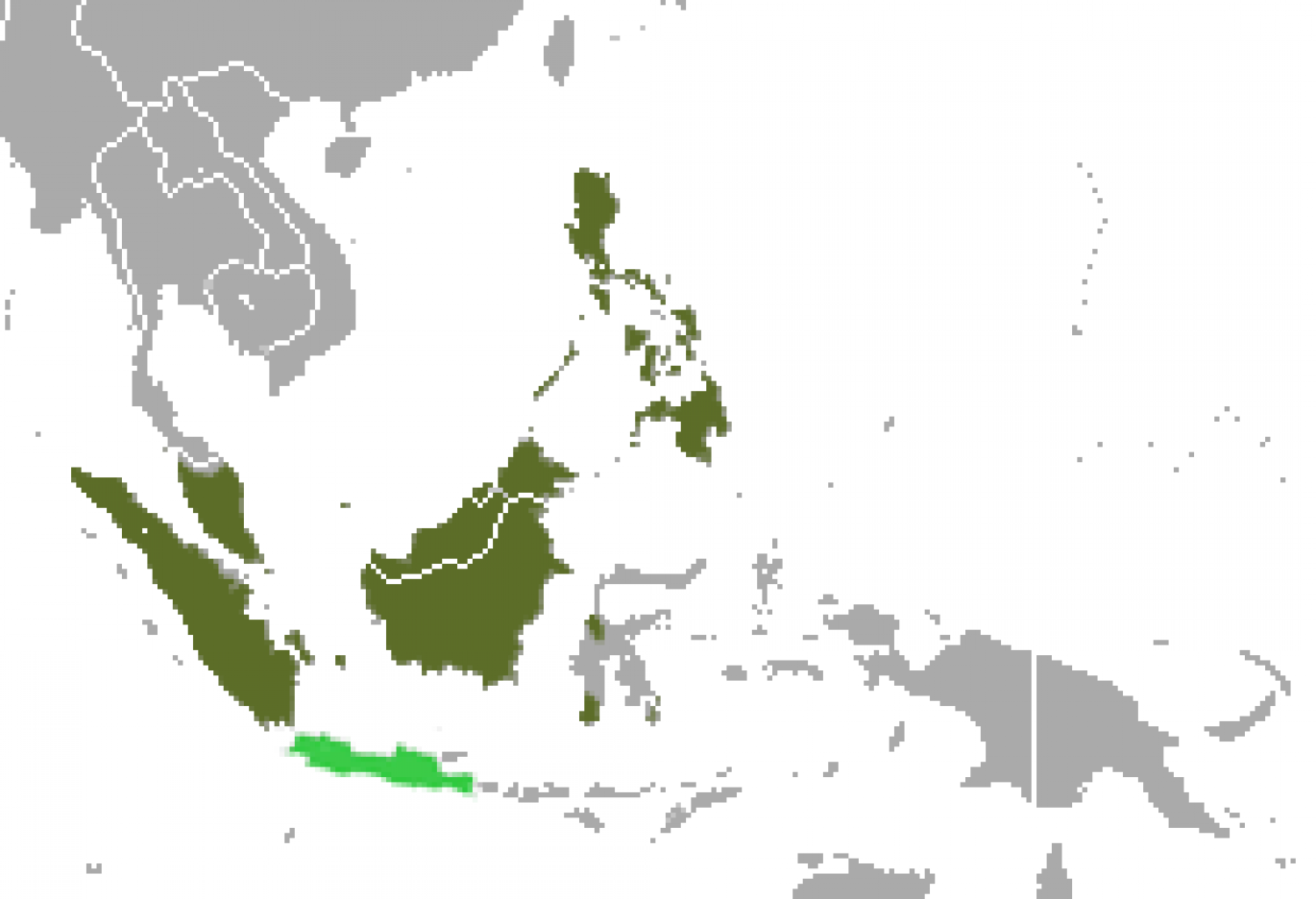Species of Thailand
Malayan civet
Viverra tangalunga
John Edward Gray, 1832
The Malay civet (Viverra tangalunga), also known as the Malayan civet and Oriental civet, is a viverrid native to the Malay Peninsula and the islands of Sumatra, Bangka, Borneo, the Rhio-Lingga Archipelago, and the Philippines. It is listed as "Least Concern" by IUCN as it is a relatively widely distributed, appears to be tolerant of degraded habitats, and occurs in a number of protected areas.
Characteristics
The Malay civet's tail is black above and ringed on the lower side.
Their upperparts are greyish with numerous black spots and about 15 black bands in the tail.
Distribution and habitat
The historical range of the Malay civet includes Indonesia, Malaysia, Brunei, the Philippines and Singapore. In Malaysia, it is found in Borneo, Banggi Island, Langkawi Island, Penang Island and in Peninsular Malaysia.
It is also known from Sumatra and Sulawesi.
It was introduced to the Maluku Islands.
Museum records indicate that the Malay civet also occurred on the Indonesian islands of Java, Bawal and Telok Pai, and on the Philippine island Leyte. In 2012, an individual was photographed in Singapore.
Malay civets occur in a wide variety of habitats including forests, secondary habitats, cultivated land and the outskirts of villages.
They range in elevations of up to 900 m on Gunung Madalan in Sabah and 1100 m on Usun Apau and the Kelabit Upland in Sarawak.
Ecology and behaviour
Malay civets are solitary, omnivorous, and primarily terrestrial.
Malay civets are nocturnal. They feed on invertebrates and small vertebrates.
Densities of Malay civets are higher in unlogged than in a logged forests. Fruit comprises a larger proportion of diet in unlogged forest compared to logged forest. With fruit contributing a larger percentage of the diet in unlogged forests, logging may lead to increased competition by other frugivores such as palm civets which may exploit fruit directly on trees unlike the mainly terrestrial Malay civet.
Around the Malaysian Bera Lake Malay civets were found in logged forest. Arboreal, frugivorous civets are little affected by logging, whereas terrestrial, carnivorous or insectivorous species might be negatively impacted by logging.
Threats
As a ground-living species it is exposed to snaring and other forms of ground-level trapping, and hunting with dogs. The limited survey in areas heavily used by people suggests it is rather well able to persist at general levels of threat. The species is occasionally hunted for food and treated as a pest as it raids poultry.
In Borneo, the Malayan civet is negatively affected by the effects of timber harvesting.
Conservation
Viverra tangalunga is protected in Malaysia under the Wildlife Protection Act (WPA) of 1972. However, in many rural areas of Peninsular Malaysia civets are considered a pest because they prey on small livestock and raid fruit orchards. Section 55 of the WPA of 1972 allows farmers to shoot any wild animal that causes damage to their property, as long as reasonable efforts have been made to frighten the animal away.
This article uses material from Wikipedia released under the Creative Commons Attribution-Share-Alike Licence 3.0. Eventual photos shown in this page may or may not be from Wikipedia, please see the license details for photos in photo by-lines.
Scientific classification
- Kingdom
- Animalia
- Phylum
- Chordata
- Class
- Mammalia
- Order
- Carnivora
- Family
- Viverridae
- Genus
- Viverra
- Species
- Viverra tangalunga
Common names
- German: Malaiische Zibetkatze
- English:
- Malayan civet
- Malay civet
- Oriental civet
- Spanish:
- Civeta malaya
- Civeta oriental
- Civeta de tierra
- French:
- Civette de Malaisie
- Civette malaise
- Tangalunga
- Italian: Civetta malese
- Dutch:
- Maleise civetkat
- Oost-Indische civetkat
- Russian:
- Тангалунга
- островная виверра
- Swedish: Malajisk sibetkatt
Conservation status

Least Concern (IUCN3.1)
Photos
Please help us review our species pages if wrong photos are used or any other details in the page is wrong. We can be reached via our contact us page.
Range Map


